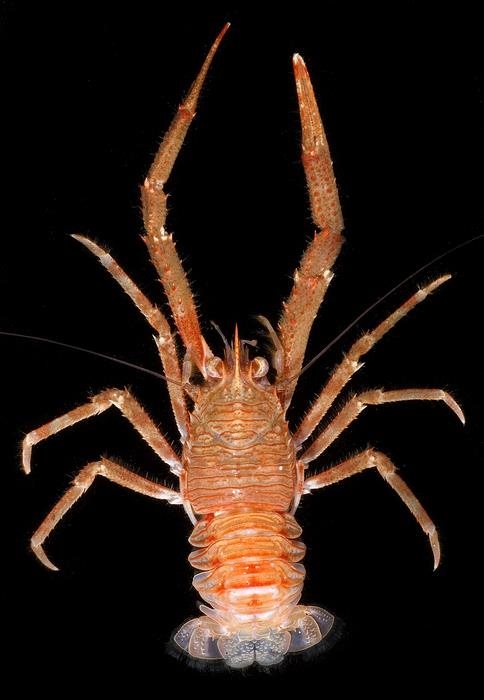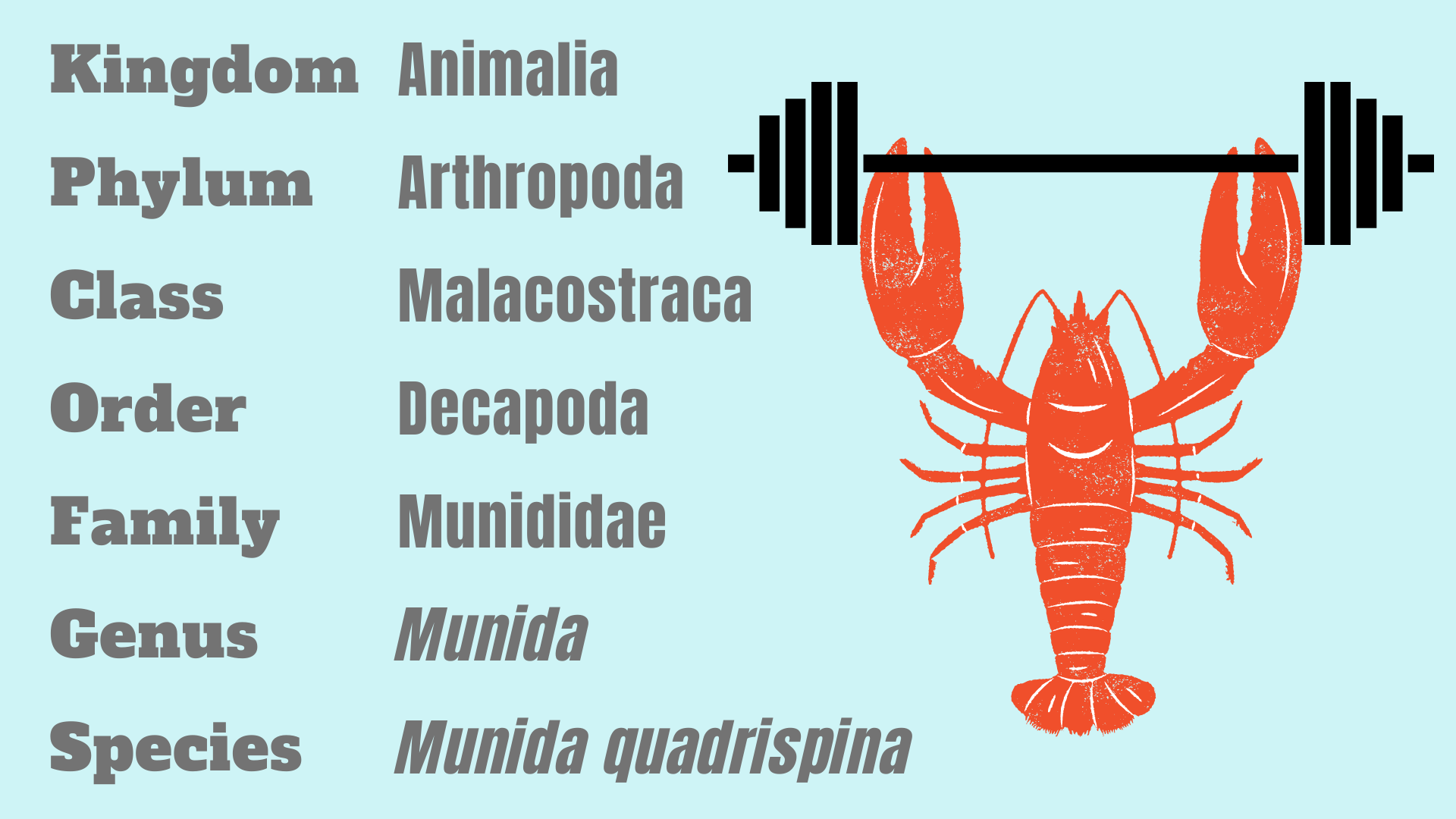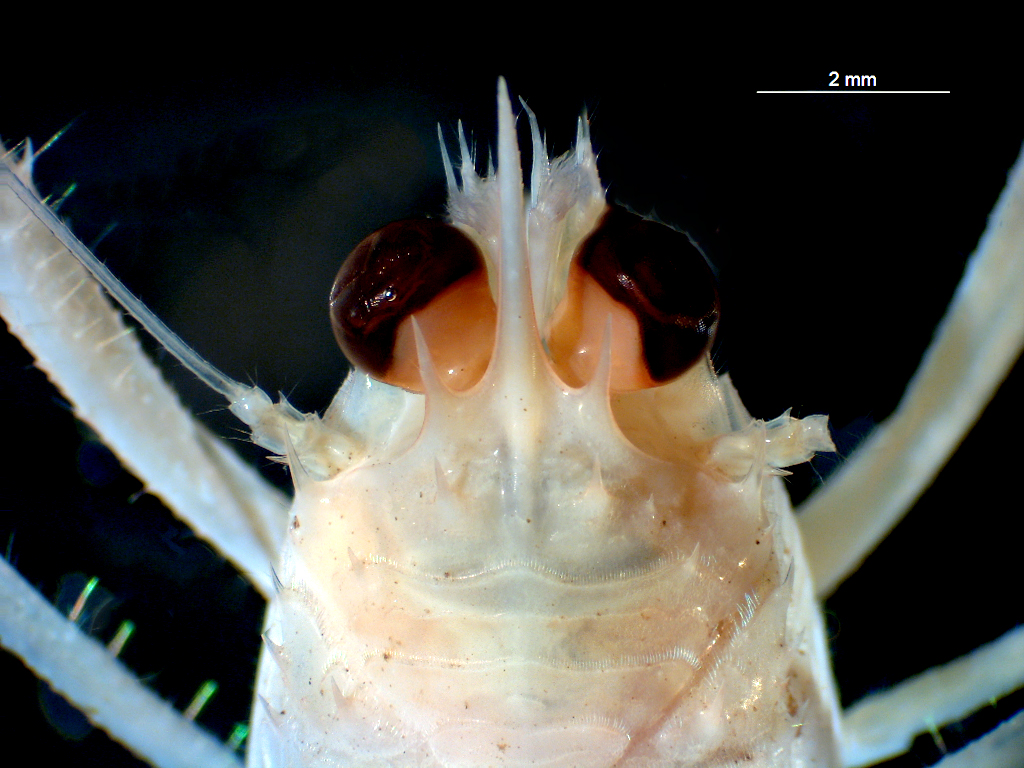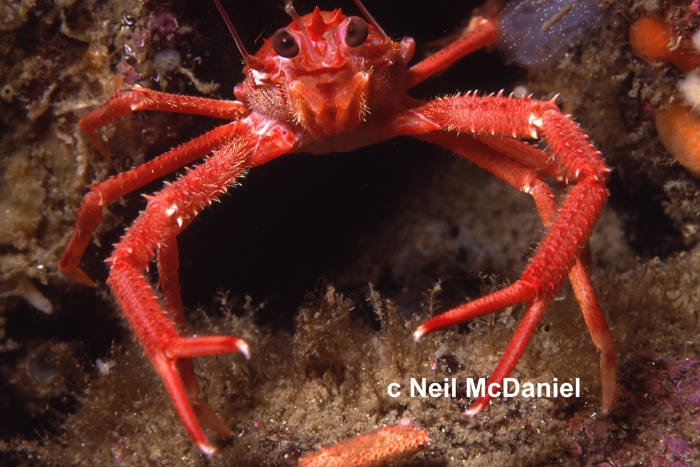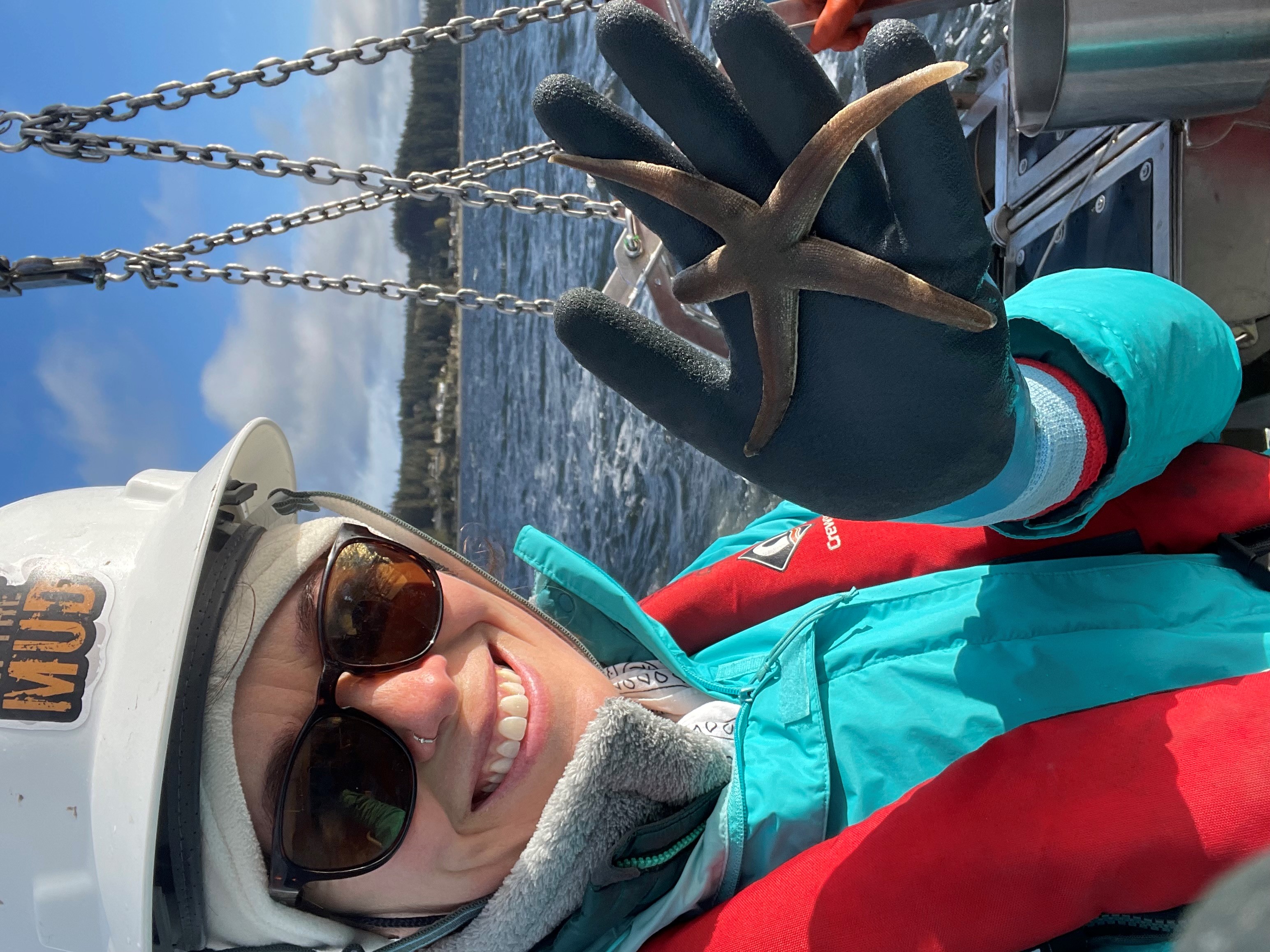Photo by Gustav Paulay, Florida Museum of Natural History. From WoRMS.
It’s almost January, which means that gyms, fitness centers, yoga studios, and living rooms across the world will soon be full of folks working hard to keep the most common New Year’s resolution of all: to turn over a new leaf of wellness and healthy living. Read on to find out how this month’s critter varies its routine to stay in peak shape year-round, in order to adapt to life in a constantly changing ocean.
So why the long tail?
Named for their squatty body shape (not for their ability to pump iron), squat lobsters or “pinch bugs” are actually not lobsters at all. Squat lobsters belong to a group of crabs called galatheids, which also includes porcelain crabs. Unlike “true” crabs that mostly keep their tails tucked away in a groove under their abdomen, squat lobsters have large, fanned tails like the charismatic American lobster.
Fake it ‘til you… get eaten?
Posing as a lobster has an unintended consequence: you sound almost as delicious as the real thing. Some species of squat lobsters are edible and are referred to as langostino lobsters. Remember when Danny DeVito got caught crawling around under someone’s restaurant table in Romancing the Stone because he “lost his langostino?” And some large US chain restaurants have tried to pass less expensive squat lobster meat off as American lobster in their dishes, leading to disputes regarding labeling of “lobster” vs “langostino.”
The most common Puget Sound species of squat lobster, Munida quadrispina, is little more than a mouthful at only about five inches in length. While not fished commercially, it is sometimes caught in prawn traps and said to taste – not surprisingly – like crab.
Squat lobsters like Munida quadrispina have enlarged eyes and a lobster-like pointed rostrum, or snout, as seen in this preserved specimen.
Cardio or bust
You won’t catch these crustaceans living a sedentary lifestyle – and if they’re lucky, you won’t catch them at all! Juvenile squat lobsters take cardio to the extreme, chasing plankton full-time in the open sea before settling to the bottom. Adults aren’t on the move nearly as much, but their workout routine still includes frequent paddling sessions, especially when a predator is nearby. All of their swimming is done in reverse, using powerful flips of their tail fans to propel them backwards.
The spice of life
Another component of healthy squat lobster living is a varied diet, or rather, being opportunistic enough to eat whatever comes along. Their slender claws are perfect for grabbing tiny crustaceans like copepods and shrimp, picking at carcasses, or catching bits of detritus, or dead organic material, that rain down to the sea floor.
Munida quadrispina on a rocky bottom. Photo by Neil McDaniel, from WoRMS.
Anaerobic activity
An abundance of detritus often goes hand-in-hand with low-oxygen (or hypoxic) conditions, because oxygen is used up in the decomposition process. Hypoxia can have dire consequences for many benthic creatures, but squat lobsters have a leg up (tail up?) in these environments. They actually seek out deep (up to ~1,500 meters!) hypoxic areas in great swarms, possibly because of the abundance of food combined with a lack of competition and predators. When oxygen levels fall too low, they migrate upwards.
As climate change and nutrient inputs put pressure on the waters of Puget Sound and beyond, the species that are able to adapt to new circumstances will be the ones that stay strong. In an uncertain world, the flexibility of the squat lobster is something we can all strive for. Here’s to a healthy and resilient 2023!
Critter of the Month
Dany is a benthic taxonomist, a scientist who identifies and counts the sediment-dwelling organisms in our samples as part of our Marine Sediment Monitoring Program. We track the numbers and types of species we see to detect changes over time and understand the health of Puget Sound.
Dany shares her discoveries by bringing us a benthic Critter of the Month. These posts will give you a peek into the life of Puget Sound’s least-known inhabitants. We’ll share details on identification, habitat, life history, and the role each critter plays in the sediment community. Can't get enough benthos? See photos from our Eyes Under Puget Sound collection on Flickr.


